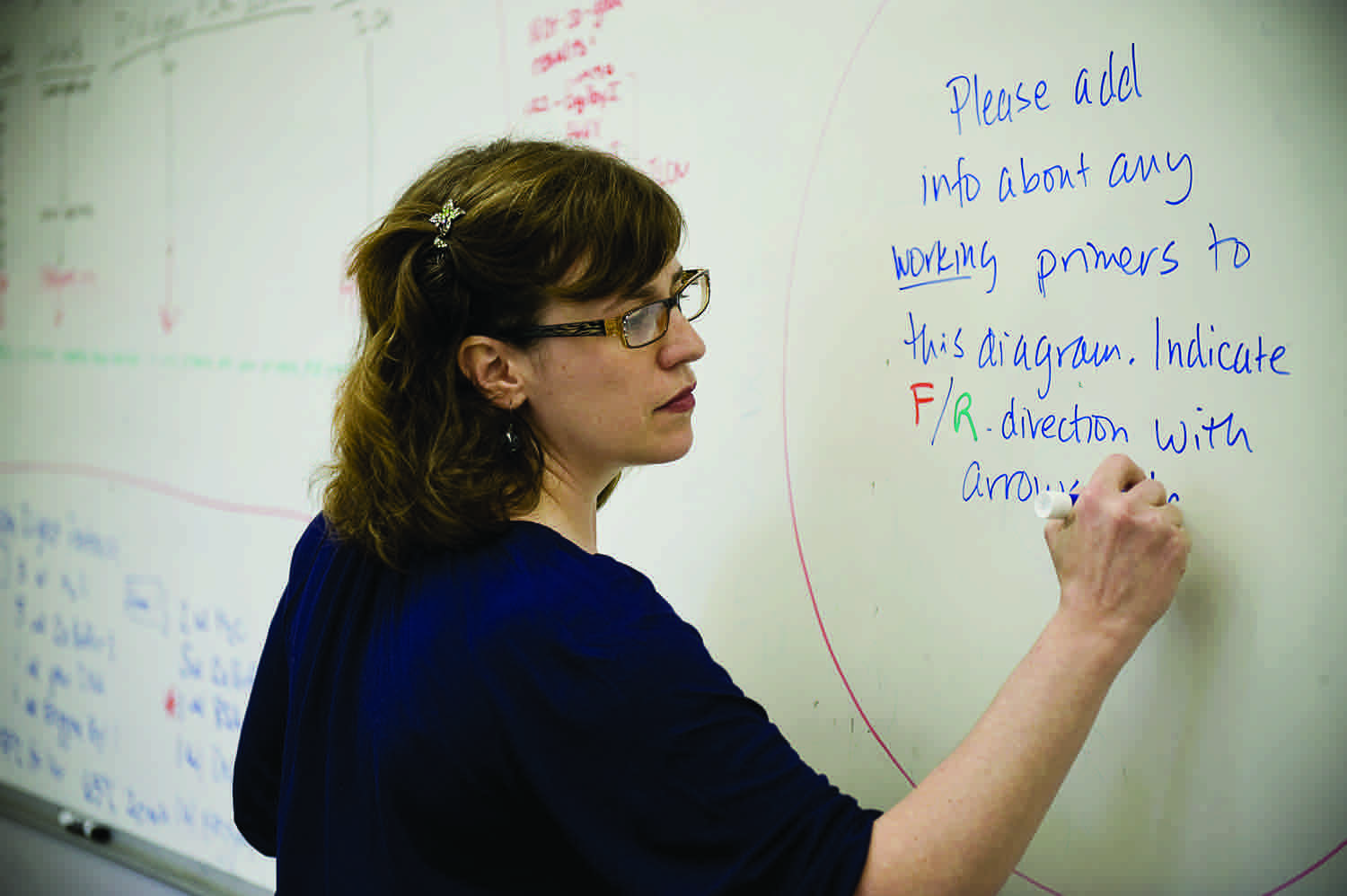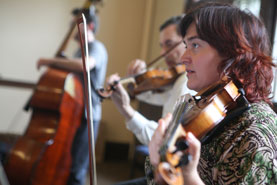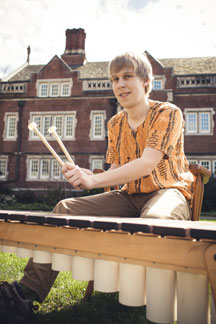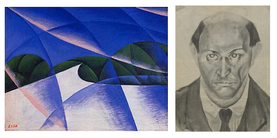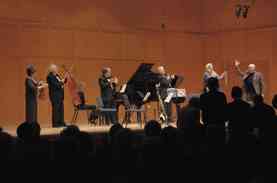
IRIS login | Reed College home Volume 96, No. 2: June 2017
Tags
"music"
Three Profs Granted Tenure
Congratulations to three members of the Reed faculty who were granted tenure this year:
Prof. Morgan Luker [music]
Prof. Luker joined the music department in 2010 as Reed’s first ethnomusicologist. His research focuses on the cultural politics of Latin American music, with special emphasis on contemporary tango music in Buenos Aires, Argentina. “We often think that aesthetics are just aesthetics, or that a musical style is just a musical style, but music in fact carries a tremendous range of meanings and functions, serving as both a symbol and generator of other forces in social life and history,” he says.
Continue reading Three Profs Granted Tenure
Physics Major Invents New Musical Instrument
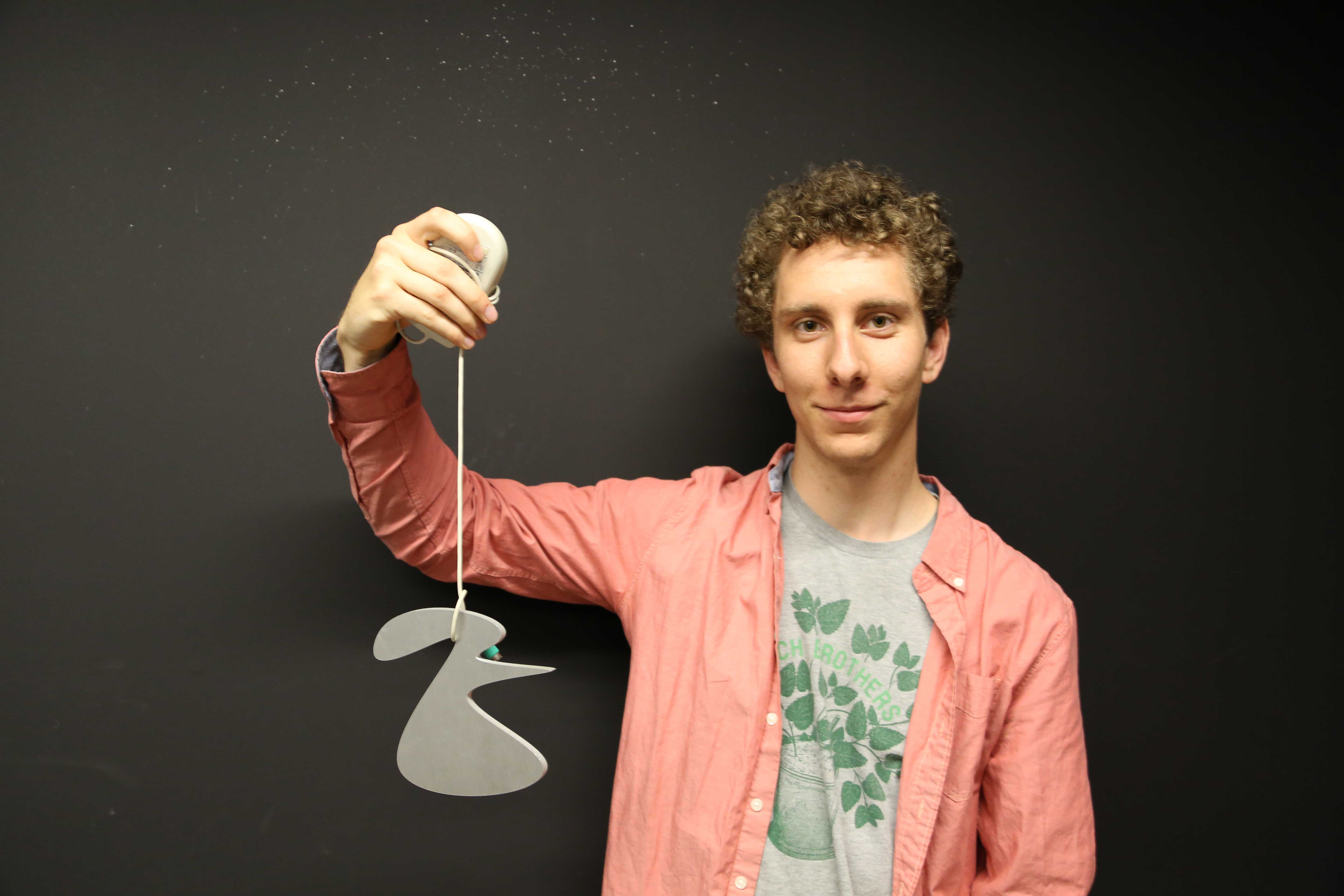
Evan Peairs ’16 invented a musical instrument for his physics thesis by borrowing ideas from aerospace and structural engineering. Photo by Chris Lydgate
Physics major Evan Peairs ’16 has built a new kind of bell for his senior thesis using an innovative design that is capable, in theory, of generating musical tones never previously achieved by a percussive instrument.
The instrument—which is related to a musical family known as the bell plate—consists of a slab of aluminum carved in an otherworldly shape that resembles a mutant unicorn. When you strike it with your finger, however, it rings with the sweet, reverent chime of a church bell.
Using the acoustical wizardry he developed for his thesis, Evan is now designing bell plates that sound like a gong, a xylophone, and a woodblock. “And I’m working on one that sounds like a trumpet,” he adds, showing a visitor around a laboratory in the Physics Building that bristles with lasers, mirrors, wires, pipes, and imposing electronic gadgetry.
Continue reading Physics Major Invents New Musical Instrument
Tango from the Inside Out
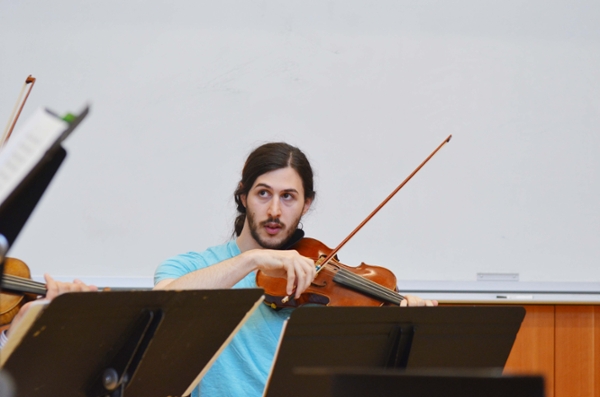
Max Boddy ’16 got the chance to study with some of the world's foremost tango masters at Reed's annual summer workshop, Tango for Musicians.
I dashed along SE 28th Avenue with my case on my back and my phone in hand, checking the time anxiously to see how much time I had before rehearsal. It was brutally hot for a June day in Oregon, but my sweat wasn’t due to the heat alone. I was three days into an intense, weeklong “tango bootcamp” with some of the world’s leading tango musicians. Incredibly, I was supposed to be performing with them on stage in two days. And now my violin was acting up. How did I get here, anyway?
Last year, Astillero, a contemporary tango group from Buenos Aires, visited Reed, and I had the opportunity to accompany them in Reed’s orchestra. Playing their original compositions with them was exhilarating, and I wanted to play and understand that kind of music better, so I applied for a Rothchild summer stipend to study at Reed’s summer workshop, Tango for Musicians at Reed College. But first, as was emphasized in our workshops, it is important to play and understand the classic tangos before venturing out into the new territory of tango today, so I had to learn some fundamentals—fast.
At the front counter, I explained my situation to a young luthier as I got out my violin and handed it over for inspection. It was a little hard to believe that I was about to perform tango music on the same stage as Ida Kavafian and Chamber Music Northwest. I’d often imagined something like this—I just didn’t think the opportunity would come this soon!
Continue reading Tango from the Inside Out
Tango Masters Tear It Up with Reed Orchestra
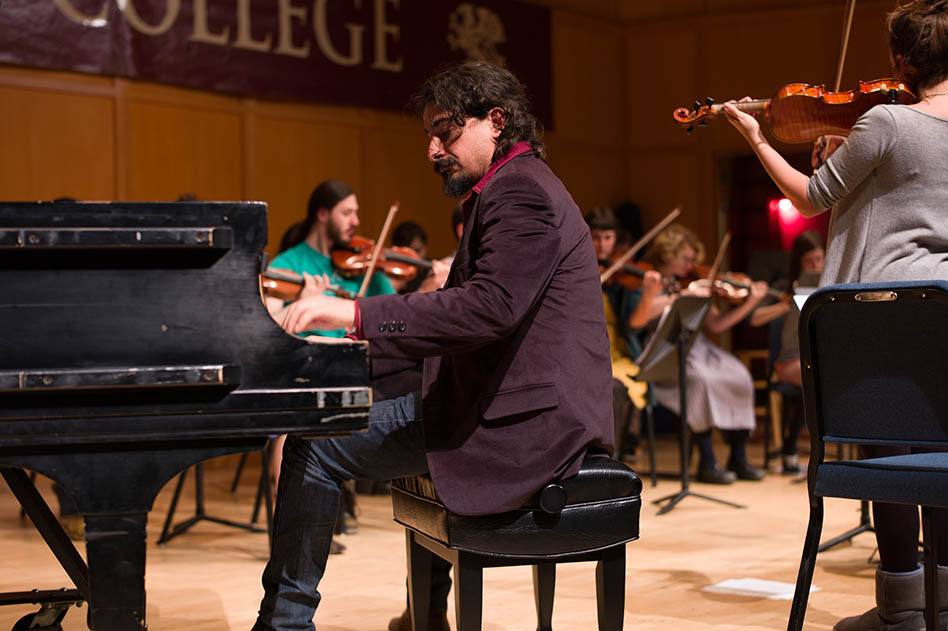
Tango ensemble Astillero, led by pianist Julián Peralta, performing live with students in the Reed Orchestra.
When the soundcheck wrapped up and the doors swung open, hundreds of excited music lovers swarmed inside, packing Kaul Auditorium for a once in a lifetime opportunity. Astillero, a highly influential band on the cutting edge of Argentina’s contemporary tango vanguard, spent a week at Reed visiting classes and rehearsing with the student orchestra, culminating in a performance of Soundtrack Buenos Aires on February 20. Led by pianist Julián Peralta, the band spent the evening alternately bantering with the audience in Spanish and delivering their revolutionary original music – urgent, aggressive, and bursting with rhythmic energy. By the end of the concert, the crowd was on their feet, cheering and shouting for more.
Astillero’s visit to Reed was co-sponsored by the departments of music, Spanish, political science, the office of the dean of the faculty, and the office of institutional diversity, and was made possible by donations from Christine Green, John Clark, Elizabeth Barringer, and James Richardson Clark ’14.
The event was presented by Tango for Musicians, North America’s leading tango workshop for musicians. Led by Prof. Morgan Luker [2010-present], the workshop takes place at Reed each June and attracts musicians from across the globe. It now boasts an artistic faculty coming directly from Buenos Aires that includes some of the most outstanding tango musicians and educators active today.
Continue reading Tango Masters Tear It Up with Reed Orchestra
Physics Majors Build Musical Staircase
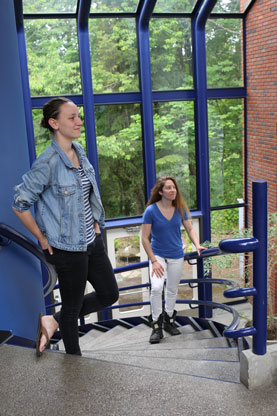
Allie Morgan ’14 and Anya Demko ’14 installed a series of lasers and phototransistors on the spiral staircase in Vollum, turning the steps into a giant, twisting keyboard spanning two octaves on a C major scale. Photo by Tom Humphrey
Pythagoras proposed the harmony of the spheres; Anya Demko ’14 and Allie Morgan ’14 built the harmony of the stairs.
In April, the two physics majors installed a series of lasers and phototransistors on the spiral staircase in Vollum, turning the steps into a giant, twisting keyboard spanning two octaves on a C major scale.
To play the keyboard, you jump from one tread to another. Each time your foot lands on a tread, it interrupts a laser beam, triggering a musical tone. Stepping nimbly down the staircase generates the synthetic jig of an ice cream truck. Charging back up sets off an avalanche of organ tones that sound like JS Bach clearing his throat.
The two seniors spent many hours designing the circuitry, constructing the hardware, and installing the lasers in Vollum. “It was really a great experience,” says Anya. “This was the first time we really got to design our own circuits.”
Continue reading Physics Majors Build Musical Staircase
Performing Arts Building Takes Center Stage
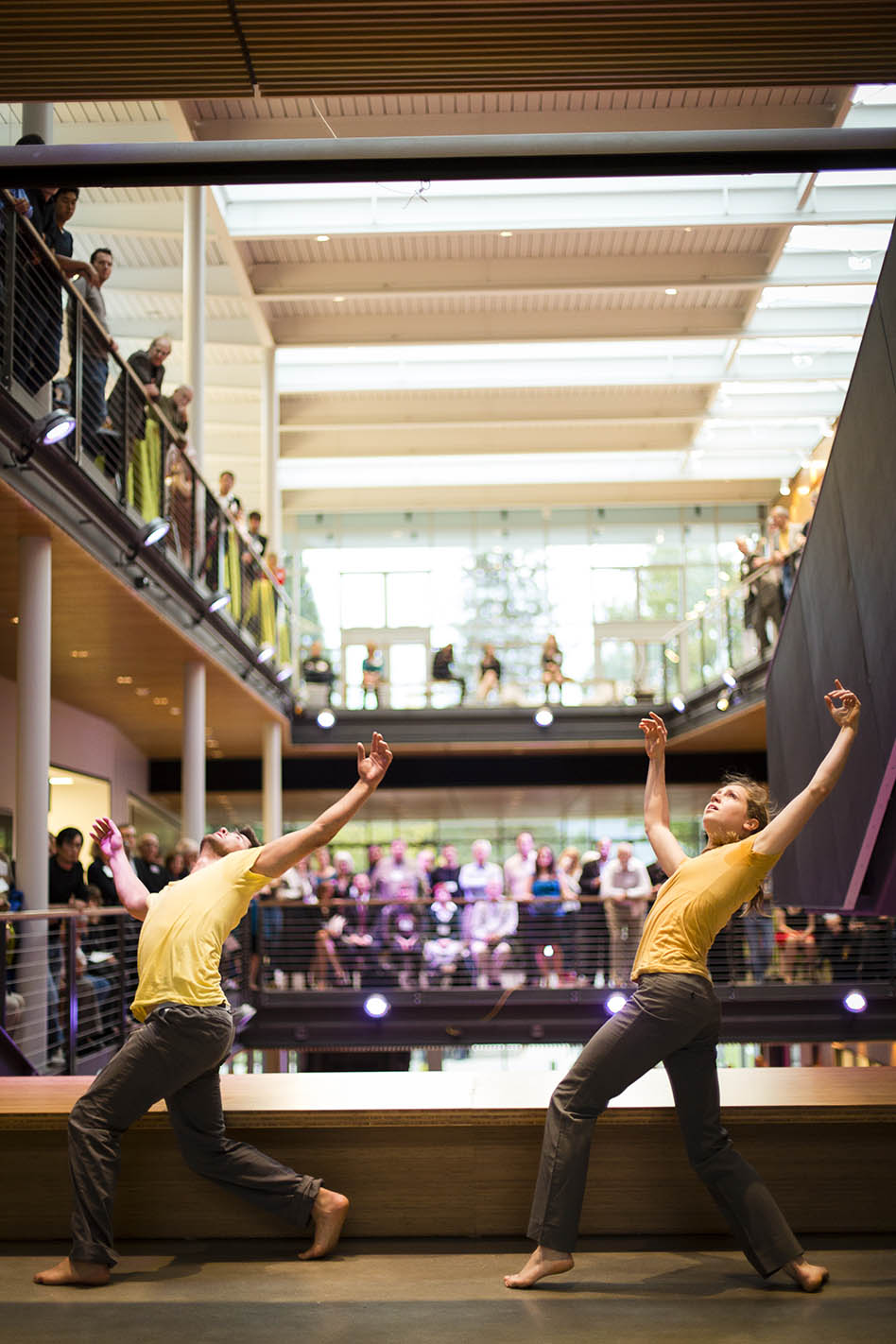
Dancers perform "L'esprit de l'escalier," choreographed by Heidi Duckler ’74, to ring in the new Performing Arts Building. Photo by NashCo
Reed’s performing arts just got an 80,000 square-foot, glass-paned, light-filled, no-holds-barred, swanky new home. Years in the making, the Performing Arts Building is finally ready to take center stage. Classes are already being held in the building and its myriad rooms and performance spaces are beginning to hum.
The building opened Friday, September 20, amid pomp and circumstance, shiny red ribbons, and several gargantuan pairs of scissors.
The ceremony began with Blast!, a fanfayre for trumpet and synthesizer, composed by Prof. David Schiff [music 1980–]. Then, standing on the grand staircase that graces the atrium, President John Kroger welcomed students, faculty, staff, alumni, and guests, giving thanks to the many people who ushered the building into reality.
Continue reading Performing Arts Building Takes Center Stage
Reed Band's Debut Album Wins Acclaim

Hausu wins acclaim for debut album "Total." Left to right: Carl Hedman ’13, Benjamin Friars-Funkhouser ’14, Alexander Maguire ’14, Santiago Leyba ’14.
Deep in a forgotten corner of the Gray Campus Center basement, down the hall from the comic book library, Reed’s band practice room (BPR) is anything but glamorous. But for many Reedies it is a hallowed space, a place that (between 5 p.m. and 7 a.m. on weekdays, all day weekends) can incubate their energy and talent. For the last three years one group of Reedies in particular have made the BPR home. They call themselves Hausu, and this summer all their hard work is finally paying off.
Hausu is composed of Carl Hedman ’13, Benjamin Friars-Funkhouser ’14, Alexander Maguire ’14, and Santiago Leyba ’14. They are rockers in the vein of 1990s indie bands like Sebadoh and Sonic Youth, and their debut album, Total, is full of interlocking guitar pieces and post-punk snarl. Total was released by Hardly Art Records on June 25. So far it has met with nearly unanimous acclaim. The Portland Mercury called “one of the finest debut records in recent memory,” while the website Allmusic called the album “infectious,” and wrote that its single, “Leaning Mess,” felt like a “distant classic.” The album’s release was timed to coincide with Hausu’s six-week, cross-country tour, which took them from Portland to New York City and back.
Hausu recorded Total over winter break, but the band had been honing the songs on the album since their first jam three years ago. It wasn’t always easy for the band members to align their schedules: last year Carl wrote his thesis in economics, while Ben, Alex, and Santi all took the junior qual (in art history, anthropology, and studio art, respectively). “it was difficult to make time to play the music,” Carl said, “but it was an important catharsis for us to deal with academic stress.”
Continue reading Reed Band's Debut Album Wins Acclaim
Tangled up in Tango
Fanning themselves with their programs in a standing-room-only Eliot Hall chapel, the audience was transported straight to the barrios of Buenos Aires as the violins, basses, bandoneones and piano plunged into a sultry tango beat.
The nine players kicked off the grand finale of the Reed College Tango Music Institute, held June 23-30, 2013. For the next two hours, 53 musicians of varying experience and combinations showcased what they’d learned that week under the tutelage of four of the world’s preeminent tango musicians. Bassist Pablo Aslan, pianist Octavio Brunetti, and bandoneonist Julian Hasse, all Argentine-born, and U.S. violinist Nick Danielson capped the evening with a couple of virtuosic romps that lifted the applauding crowd to its feet, stomping for an encore. Many in the crowd refused to sit back down until they’d tangoed well past midnight at the milonga that followed in Student Union, led by Alex Krebs ’99.
Continue reading Tangled up in Tango
Watson Winner Will Go to Africa
All roads lead somewhere. For Cole Perkinson ’13, they lead to Africa.
Cole, a chemistry-physics major, has been awarded a Watson Fellowship to spend a year in Africa exploring native music.
The Watson Year provides fellows with an opportunity to test their aspirations, abilities, and perseverance through a personal project that is cultivated on an international scale. Watson Fellows have gone on to become international leaders in their fields including CEOs of major corporations, college presidents, MacArthur “genius” grant recipients, diplomats, artists, lawyers, doctors, faculty, journalists, and many renowned researchers and innovators. The program offers a stipend of $25,000 to 40 fellows from 40 liberal arts colleges to pursue an independent study of something they are passionate about in a country that is not their own.
For Cole, that passion is Zimbabwean music, which he has played with his family since he was 10 years old.
Continue reading Watson Winner Will Go to Africa
Memorial for Ottomar
![Professor Ottomar Rudolf [German 1963-98]](assets/images/2013/03/ottomar-rudolf-office.jpg)
We are sad to report that Professor Ottomar Rudolf [German 1963-98], an iconic figure on campus for many decades, died of a massive stroke over the weekend. He was 83 years old.
Ottomar served the college as a faculty member in the German and humanities departments for 35 years. He founded the German House and launched the Reed in Munich program. He was also a champion of music at Reed; he founded the Music Matinee, coordinated the Music Associates program, sang in the Reed chorus, and served on the boards of the Portland Opera and the Portland Youth Harmonic. He coached the Reed soccer team, was the inspiration for Portland Brewery’s award-winning Uncle Otto’s Oktoberfest beer, and served—at different times—in both the German and the U.S. Army.
Continue reading Memorial for Ottomar
A Five-Octave Finale
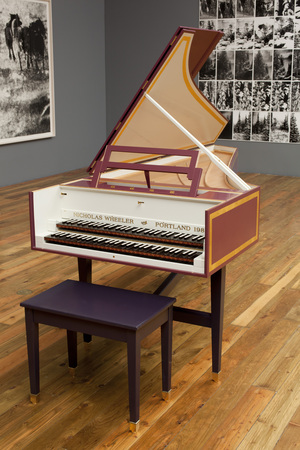 The Douglas F. Cooley Memorial Art Gallery was packed to the rafters last week as alumni from many eras came together in a hush of anticipation to witness a unique occasion--the unveiling of the French double harpsichord created by professor Nicholas Wheeler '55 [physics 1963-2010] over a span of 26 years, and showcased during Reunions '12: Reedfayre.
The Douglas F. Cooley Memorial Art Gallery was packed to the rafters last week as alumni from many eras came together in a hush of anticipation to witness a unique occasion--the unveiling of the French double harpsichord created by professor Nicholas Wheeler '55 [physics 1963-2010] over a span of 26 years, and showcased during Reunions '12: Reedfayre.
Nick became fascinated by the harpsichord (the distinguished ancestor of the piano) while playing at a concert his freshman year at Reed and resolved to build his own some day. He finally began work many years later, in August 1985, when he was A.A Knowlton Professor of Physics. While the bulk of the carpentry and metalwork were completed in the two years that followed, the venture languished for two decades when his teaching and other things took greater precedence. Nick was not able to put finishing touches on the instrument until after his retirement in 2010, after 47 years of service.
"This is a Reed instrument and its first public appearance. It's something I've fantasized about for 60 years," Nick remarked. Returning students and friends continued to ask over the years when and if the project would ever be finished. "It is a doubt which I confess, I sometimes shared: it gave me anxiety because I did not want to leave to my heirs the problem of figuring out how to dispose of a stringless box that looked like a harpsichord, but was unplayable." However friends, such as professor Kathleen Worley, [theatre 1985-] helped along the way by picking up some gold-dipped hardware and wood scrapers.
Continue reading A Five-Octave Finale
Synaesthesia and the Great War
"Today's dissonance in music and painting is merely the consonance of tomorrow," wrote Russian painter Wassily Kandinsky in a 1913 letter to Austrian composer Arnold Schoenberg. At the dawn of the 20th century, artists like Kandinsky and Schoenberg broke free from the norms of their medium--and subsequently, their era--by creating music and art that was atonal and abstract. But one year later, the entire movement was uprooted, and the daring avant-garde was replaced by the traditionalism of yesteryear.
What explains this artistic retreat? The Great War, according to author and musicologist Olivia Mattis, who visited campus Saturday as part of ROMP (Reediana Omnibus Musica Philosopha), Reed's annual symposium on music and the liberal arts. "The high modernism of the pre-World War I avant-garde was displaced" after the war, said Mattis. "War called for a return to traditional values."
Continue reading Synaesthesia and the Great War
Listening to 1912
Reed's first students embarked on their college career during a period in Western music as momentous as any, with the crumbling of systems of form and harmony, influences from far beyond Europe, and an impending flood of new genres that would soon push the old ones into side channels and backwaters. It was ever thus, you could argue, but like the political upheavals going on at the time, the transformation put paid to the past in radical fashion and set the course for the last century right up to now.
Continue reading Listening to 1912
A Winter's Ramble with Schubert
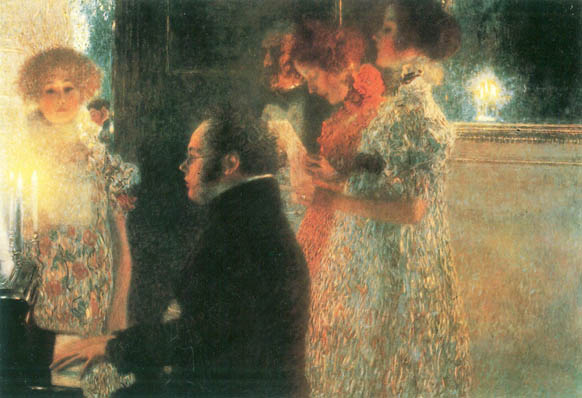 I had to chuckle at the brouhaha stirred by New York Times music critic Anthony Tommasini recently with his ambitious attempt to rank the Top Ten Classical Composers Ever. (In case you haven't heard, JS Bach was #1.)
I had to chuckle at the brouhaha stirred by New York Times music critic Anthony Tommasini recently with his ambitious attempt to rank the Top Ten Classical Composers Ever. (In case you haven't heard, JS Bach was #1.)
Lists of this sort are an old journalistic standby--subjective, outrageous, infuriating, and a marvelous device to spark debate and spur readership.
Continue reading A Winter's Ramble with Schubert

